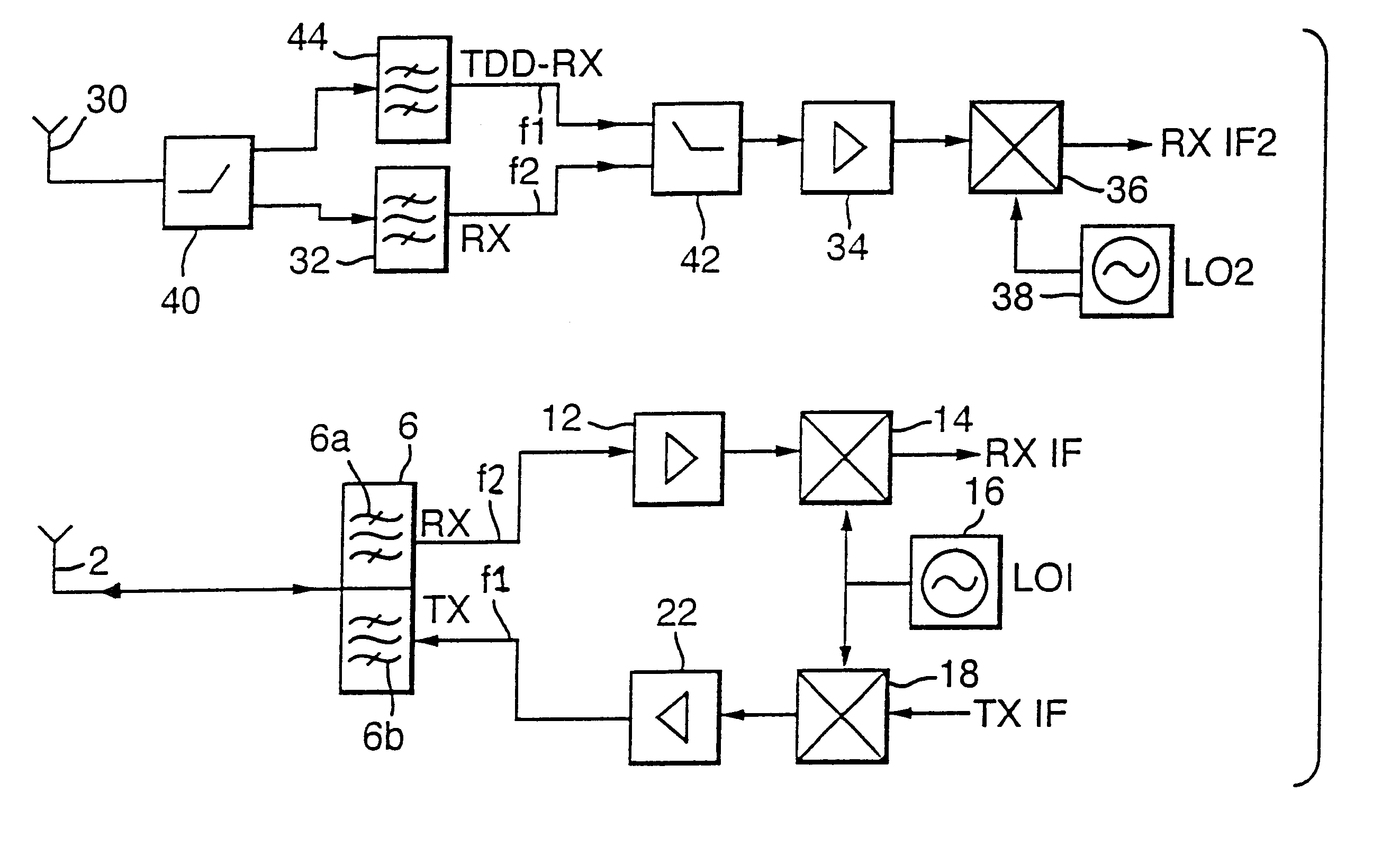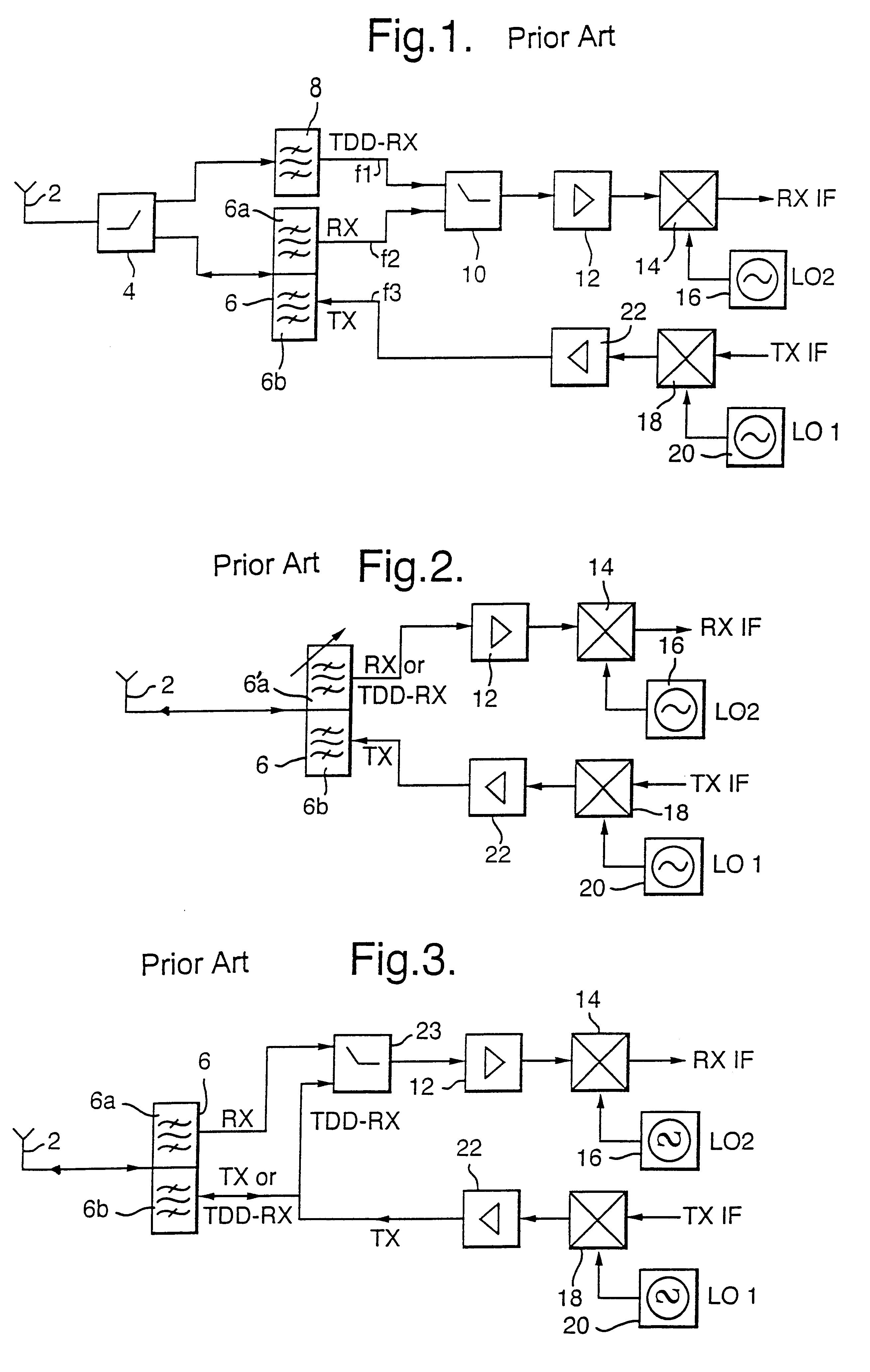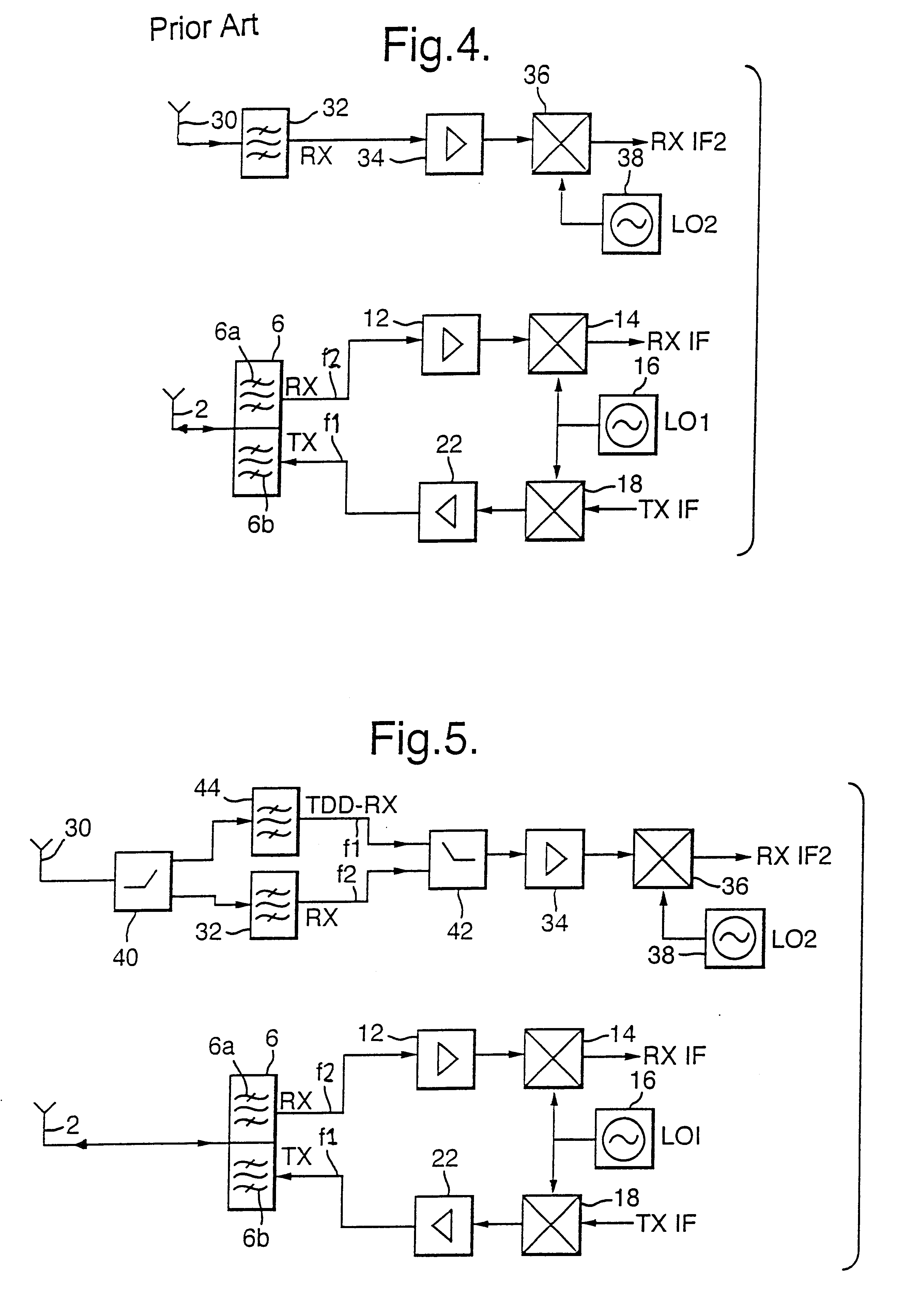Wireless communication transceiver having a dual mode of operation
a wireless communication and transceiver technology, applied in the field of cell telecommunication networks, can solve the problems of loss or garble of information carried by the signal which should be received, transmission of a much greater strength than the received signal, and two switches 4 and 10 both need to have good isolation
- Summary
- Abstract
- Description
- Claims
- Application Information
AI Technical Summary
Benefits of technology
Problems solved by technology
Method used
Image
Examples
first embodiment
Reference will now be made to FIG. 5 which shows the present invention. It should be appreciated that those components are the same as shown in the previous Figures are referred to by the same reference numeral.
The arrangement shown in FIG. 5 has two modes of operation. Preferably the FDD mode of operation uses CDMA whilst the TDD mode of operation uses TDMA or a TDMA / CDMA hybrid mode of operation. In the FDD mode of operation, the first antenna 2 is arranged to transmit signals in the frequency range F1. It should be appreciated that signals will be sent in one of the channels within the first frequency range. The signal which is to be transmitted is input at an intermediate frequency to the second mixer 18. The second mixer 18 has an input from the first high frequency synthesizer 16 which generates a signal at a given frequency. The output of the second mixer 18 represents the signal to be transmitted at the radio frequency. The radio frequency signal is then is amplified by the ...
second embodiment
Reference will now be made to FIG. 6 which shows the present invention. The arrangement shown in FIG. 6 is the same as that shown in FIG. 5 except that the first and second switches 40 and 42 and the first and second receive filters 32 and 34 have been replaced by a tunable receiver filter 46 which can be tuned to the frequency range F1 or F2 depending on the mode of operation. In the FDD mode of operation, the tunable filter 46 will be tuned to the frequency range F2. Thus the same signal in the frequency range F2 is received via the first and second antennae 2 and 30 giving space diversity. The signals are transmitted via the first antenna 2 and are in the frequency range F1.
In the TDD mode of operation, the tunable filter 46 will be tuned to frequency F1, that is the frequency used in the FDD mode of operation for the transmitted signals. The tunable filter 46 has a control input which controls the frequency to which the filter 46 is tuned, in dependence on the mode of operation....
third embodiment
Reference will now be made to FIG. 7 which shows the present invention. Those components which are the same as shown in FIGS. 5 and 6 will not be described again and will be referenced by the same reference numerals. In this embodiment, the first frequency range F1 is divided into two parts as can be seen from FIG. 10c. In particular, the first part of the frequency range Fa is used to transmit signals from the mobile station to the base station in the FDD mode. The second part Fb of the first frequency range is used by the base station to transmit signals to the mobile station in the TDD mode of operation. Additionally this same frequency range Fb may be used by the mobile station in the TDD mode of operation to transmit signals to the base station. The base station uses the second frequency range F2 to transmit signals to the mobile station in the FDD mode of operation.
The components connected to the second antenna 30 in this embodiment are the generally the same as the components...
PUM
 Login to View More
Login to View More Abstract
Description
Claims
Application Information
 Login to View More
Login to View More - R&D
- Intellectual Property
- Life Sciences
- Materials
- Tech Scout
- Unparalleled Data Quality
- Higher Quality Content
- 60% Fewer Hallucinations
Browse by: Latest US Patents, China's latest patents, Technical Efficacy Thesaurus, Application Domain, Technology Topic, Popular Technical Reports.
© 2025 PatSnap. All rights reserved.Legal|Privacy policy|Modern Slavery Act Transparency Statement|Sitemap|About US| Contact US: help@patsnap.com



